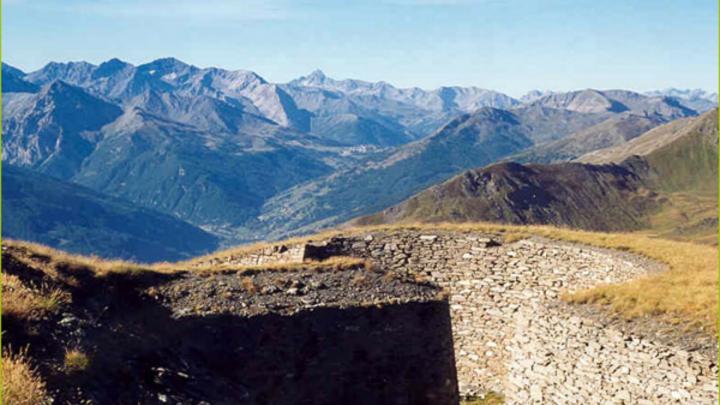Assietta military road: can be reached by car via a dirt road from Usseaux.
Anticipating an imminent invasion by the French, the Regno di Sardegna, in 1747, envisioned the construction of a large camp of trenches, which would be able to simultaneously cover the Exilles, Fenestrelle and, indirectly, Susa squares, concentrating its efforts on one key strategic point. Overseeing this construction was Vedani, a military engineer, and Count Cacherano di Bricherasio. Within a few weeks, a field of trenches many kilometres in size had been constructed, descending from the summit of Gran Serin in a double row of trenches, narrowing as far as Colle dell’Assietta; it then ascended the peaks on the other side, to a dominant position called Testa dell’Assietta. Between the hill and the Testa dell’Assietta, several other narrow defensive lines can be seen. On 19 July 1747, a 20,000-strong French army, led by Generale Bellisle, attacked the 7,500 Allied, Savoy and Imperial troops trapped in the trenches. By the end of the battle, Generale Bellisle and thousands of French soldiers were dead, while the victorious allies suffered hundreds of casualties. After that, the site became a part of Savoyard military heritage; it was put back into service during the Italian Invasion of France (1792–1796), though it didn’t see any further battles. It was occupied and partly dismantled by the engineers of the French Republic in 1794, when they found it in a state of disuse. It was never rebuilt. Today the nineteenth-century battery stands on this spot on Gran Serin; the fortified sections leading up to Colle dell’Assietta, along with those running up the hill, are the best preserved. Atop Testa dell’Assietta, where the Butta dei Granatieri once stood, small traces of the fortifications can be seen today. Demolished in 1784, the monument laid down and constructed by the Cai in 1882 still rises upwards, a memorial of the battle.

